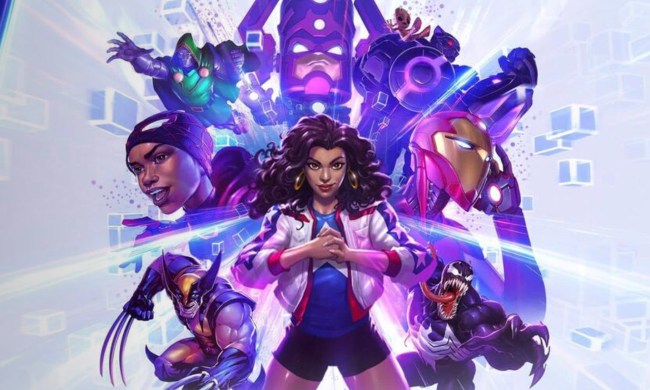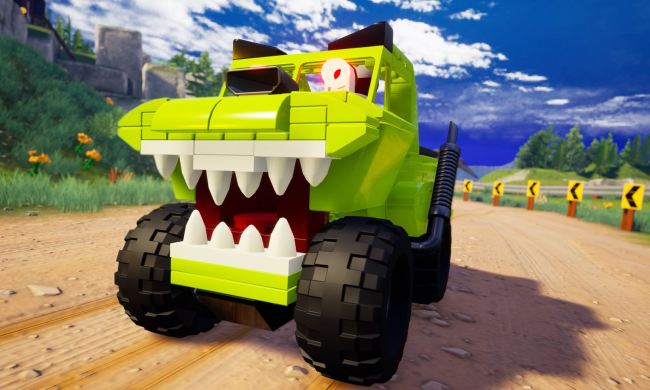Ant-Man and The Wasp: Quantumania hit theaters this weekend, and you will know that’s the case even if your only connection to comic books is through Marvel Snap. Throughout February, Marvel Snap is in its “Into the Quantum Realm” season. It’s all centered around content themed on that microscopic world from the new Marvel movie. It introduces cards based on Ant-Man movie characters like M.O.D.O.K., Ghost, Stature, and Kang the Conqueror, as well as new locations based on places that have been in Marvel Cinematic Universe movies like the Quantum Realm, Quantum Tunnel, Camp Lehigh, and the Sacred Timeline.
Developer Second Dinner made similar tie-in seasons for Thor: Love and Thunder and Black Panther: Wakanda Forever last year. As a fan of both Marvel movies and Marvel video games, these Marvel Snap seasons have done a fantastic job thus far integrating the two. Marvel’s film and gaming efforts have mostly remained separate, often intentionally, since a couple of terrible tie-in games during the MCU’s Phase 1.
Often, it feels like comic book games have to be either direct tie-ins or wholly disconnected from the films in theaters at the time. However, Marvel Snap shows that any comic book game can still feel relevant to what’s happening in theaters in subtle but satisfying ways.
A seamless crossover
With each new Season of Marvel Snap, I love keeping an eye out for what’s new in the card game. Because of how wildly different each round can be, new cards and locations can impact games differently every time they appear. M.O.D.O.K., in particular, opens up some interesting strategies as it can discard your entire hand upon its reveal. Before I know it, I find that I’m using new cards and looking up information on the characters and locations I am playing with.
One of the unspoken strengths of Marvel Snap is how casually it can introduce or reexpose its players to a vast amount of characters and locales from the Marvel universe. Not only is that approach good for shedding light on less popular corners of the universe, like The Savage Land, but it also makes it a good marketing and crossover tool for the latest Marvel movie.
M.O.D.O.K., Ant-Man, and the Quantum Realm are on the top of my mind right now, as Marvel Snap is one of the games I play the most. Now, I find myself a bit more excited to see Quantumania than I was based on the trailers, even after mixed reviews. That’s just effective marketing.
This is technically not a direct crossover event or a brand-new tie-in game; it’s just exposing me to the right Marvel content to supplement what I’m seeing in the cultural zeitgeist. Then, once Quantumania being in theaters isn’t as relevant, Marvel Snap can move on and continue exploring new parts of the Marvel universe with future seasons.
Finding success
This seasonal tie-in approach Marvel Snap takes is an effective and clever piece of marketing that keeps me engaged with both the game and MCU films. In fact, no superhero game before has been able to tie into movies quite like this. Marvel Strike Force and Contest of Champions character cameos feel a little too ham-fisted, while Sega’s licensed Marvel games from the late 2010s were too much of a mixed bag to ever work. Marvel’s Avengers, a live service game featuring many characters getting new movies and shows, was also never able to get this cadence right.
While Marvel’s Avengers would get costumes based on the MCU, it rarely ever felt in line with what the MCU released at the time. Occasionally, additions like the Red Room and Jane Foster’s Mighty Thor would line up correctly, but those felt like exceptions rather than the rule when the game didn’t have a consistent seasonal structure. Even though its narrative purposefully wasn’t connected to the MCU, Marvel’s Avengers’ post-launch support could have attracted more attention and even bolstered the movies had it lined things up as well as Marvel Snap has.
As Marvel’s Avengers loses support later this year, its failure to capitalize upon and enhance the game with MCU tie-ins in compelling ways can be seen as one of its many failures. It also raises questions on how future D.C. games will connect to their universe. James Gunn’s current plan seems to incorporate video games heavily, having them filling gaps in his narrative’s story rather than directly tying into a specific film or just serving as supplementary hype material like Marvel Snap.
Admittedly, the resources and effort required for a new game are very different from what’s needed for a new Marvel Snap season. Still, Second Dinner has shown how comic book movies and video games can nicely tie together without stepping on each other’s feet. Simply getting players in the correct headspace and theming for whatever’s in theaters is enough, especially if the game in question is a live service title with a seasonal structure.




